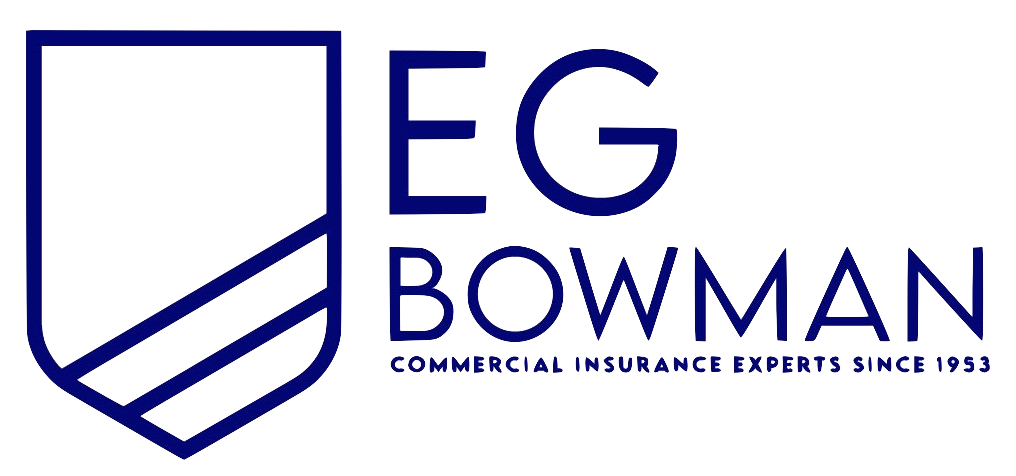
Most Common Business Policies
Index
Contact Us
Non-profit organizations play a crucial role in serving communities and addressing social issues. However, just like any other business entity, they are exposed to various risks that can jeopardize their operations. Non-profit insurance is designed to protect these organizations and provide peace of mind as they pursue their missions. Below, we'll explore everything you need to know about non-profit insurance in New York.
Understanding Non-Profit Insurance
Non-profit insurance is specifically tailored to address the unique challenges faced by non-profit organizations. This insurance provides coverage for a range of potential risks and liabilities that can arise in the course of operating a non-profit.
The Basics of Non-Profit Insurance
At its core, non-profit insurance offers protection against claims arising from injuries or damages that may occur during the course of operations. This can include coverage for property damage, bodily injury, and personal injury claims. Key types of coverage include general liability, property insurance, and specialized coverage for volunteers and directors.
Non-profit insurance is crucial for safeguarding the financial stability of an organization. It ensures that funds can be allocated towards mission-related projects rather than potential legal fees or settlements.
Moreover, non-profit organizations often operate in dynamic environments where they engage with various stakeholders, including the public, government entities, and other organizations. This interaction increases the likelihood of incidents that could lead to claims, making comprehensive insurance coverage even more essential. For example, if a volunteer accidentally injures a participant during an event, the organization could face significant financial repercussions without adequate insurance in place.
Importance of Non-Profit Insurance
The significance of non-profit insurance cannot be understated. By having the right insurance coverage, a non-profit can protect its assets, employees, and volunteers. Furthermore, it enhances credibility among donors, funders, and the community.
With non-profit insurance, organizations can mitigate the financial impact of lawsuits or unforeseen events, allowing them to continue their important work without interruptions. Additionally, being insured often helps non-profits to adhere to grant requirements, which may stipulate certain coverage levels.
In addition to the standard coverages, many non-profits may benefit from specialized policies that address their specific activities, such as event insurance for fundraising activities or cyber liability insurance to protect against data breaches. As non-profits increasingly rely on technology for operations and outreach, having coverage that protects against cyber threats has become a critical component of a comprehensive insurance strategy. This not only safeguards sensitive information but also helps maintain trust with stakeholders who expect their data to be handled responsibly.

Types of Non-Profit Insurance in New York
Various types of non-profit insurance are available to cater to the different needs of organizations. Understanding these options is vital for selecting the right coverage.
General Liability Insurance
General liability insurance is one of the most essential types of coverage for non-profits. It protects against claims of bodily injury, property damage, and personal injury that may occur during the organization’s operations. For example, if someone is injured on the premises during a volunteer event, this insurance can cover legal costs and settlements.
This coverage not only protects the organization but also provides peace of mind to staff and volunteers, enabling them to focus on their mission rather than potential risks. Furthermore, having general liability insurance can enhance the credibility of a non-profit, as it demonstrates a commitment to responsible management and risk mitigation, which can be appealing to donors and grant-making organizations.
Directors and Officers Insurance
Directors and Officers (D&O) insurance is vital for non-profits as it protects the personal assets of board members and officers from legal claims arising from their decisions while managing the organization. This coverage is important, especially since board members often face scrutiny over their operational choices.
By having D&O insurance, non-profits can attract qualified individuals to serve on their boards, knowing they are protected against potential liabilities that can arise from governance decisions. Additionally, this insurance fosters a culture of transparency and accountability, encouraging board members to make informed and bold decisions without the fear of personal financial repercussions, ultimately benefiting the organization’s mission.
Workers Compensation Insurance
Workers' compensation insurance is required in New York for organizations that have employees. It provides coverage for medical costs and lost wages if an employee is injured on the job. This type of coverage is crucial not only for legal compliance but also for creating a safe working environment.
For non-profits that rely heavily on their staff to fulfill their missions, having this insurance in place ensures that employees are supported in the event of workplace accidents. Moreover, investing in workers' compensation insurance can also motivate non-profits to implement robust safety training and risk management programs, which can lead to a healthier workplace culture and improved employee morale. This proactive approach not only protects the organization financially but also enhances the overall effectiveness of its operations by ensuring that staff can perform their duties without the looming threat of injury-related financial burdens.
How to Choose the Right Non-Profit Insurance
Selecting the right non-profit insurance requires careful consideration of various factors to ensure that coverage aligns with the organization's needs.
Assessing Your Non-Profit's Risks
The first step in choosing insurance is to assess the specific risks your organization faces. This evaluation may include understanding the nature of programs offered, the number of volunteers and employees, and potential exposure to various liabilities.
By identifying potential risks, organizations can better tailor their insurance coverage for optimal protection. For example, if your non-profit frequently hosts events, you may need to consider event liability insurance. Additionally, if your organization works with vulnerable populations, such as children or the elderly, you may want to explore coverage options that address abuse and molestation claims, which can be particularly sensitive and complex.
Comparing Insurance Providers
Once you understand your organization’s specific needs, it is important to compare different insurance providers. Look for companies that specialize in non-profit coverage and understand the unique challenges of the sector.
Evaluate their reputations, customer service, and claims process. Reading reviews and networking with other non-profits can provide insight into which providers are reliable and supportive of their clients’ needs. Furthermore, consider reaching out to local non-profit associations or coalitions for recommendations, as they often have established relationships with insurers that cater specifically to the non-profit sector.
Understanding Policy Terms and Conditions
Before finalizing any insurance policy, it’s crucial to read and understand the terms and conditions. Pay attention to coverage limits, exclusions, deductibles, and the total cost of the policy.
Consulting with an insurance expert can help demystify complex legal jargon and ensure that you fully understand the implications of your coverage choices. It may also be beneficial to request a side-by-side comparison of different policies, highlighting key differences in coverage and costs. This exercise can clarify which policy offers the best value and protection for your specific organizational needs, allowing you to make a more informed decision.
The Cost of Non-Profit Insurance in New York
Understanding the cost of non-profit insurance is essential for budget planning. The price of premiums can vary widely based on several factors.
Factors Influencing Insurance Costs
Several elements influence the cost of non-profit insurance, including the size of the organization, the types of activities it conducts, and the coverage limits selected. Additionally, claims history and the location of the organization play significant roles in determining insurance costs.
- Type of Coverage: Different types of insurance will have varying premium costs. For example, general liability may be more affordable than D&O insurance.
- Claims History: A non-profit with a history of claims may face higher premiums due to perceived risk.
- Size and Scope: Larger organizations or those with complex operations may require more comprehensive coverage, impacting costs.
Tips for Reducing Insurance Costs
While insurance costs can be significant, there are ways to manage and potentially reduce these expenses. Here are some strategies:
- Bundle Policies: Consider purchasing multiple types of insurance from the same provider to receive discounts.
- Evaluate Coverage Needs: Regularly reassess your coverage to ensure you are not paying for unnecessary options.
- Implement Risk Management: Establish risk management practices to minimize the likelihood of claims, which can lead to lower premiums.
Additionally, non-profits can benefit from engaging with an insurance broker who specializes in the non-profit sector. These professionals can provide tailored advice and help organizations navigate the complexities of insurance policies, ensuring they find the best coverage at the most competitive rates. Brokers often have access to a variety of insurers and can negotiate terms that may not be available to organizations approaching insurers directly.
Another important aspect to consider is the impact of community engagement on insurance costs. Non-profits that actively participate in community outreach and demonstrate a commitment to safety and risk management may be viewed more favorably by insurers. This proactive approach not only helps in building trust with the community but can also lead to potential discounts on premiums as insurers recognize the lower risk associated with well-managed organizations.

Legal Requirements for Non-Profit Insurance in New York
Non-profit organizations in New York must navigate various legal requirements concerning insurance coverage. Understanding these regulations is essential for compliance.
State Regulations for Non-Profit Insurance
New York law requires non-profits with employees to carry workers' compensation insurance. Additionally, certain types of coverage may be mandated depending on the nature of the organization’s activities, especially if they work with vulnerable populations or engage in high-risk activities. For instance, organizations that provide services to children, the elderly, or those with disabilities may need additional liability coverage to protect against potential claims arising from their operations.
It's important for non-profits to stay informed about state regulations as they can change. Regularly consulting with legal experts in non-profit law can provide guidance and ensure compliance. Furthermore, non-profits should consider participating in workshops or seminars focused on insurance and legal requirements, as these can offer valuable insights and updates on best practices in risk management.
Compliance and Penalties
Failure to comply with insurance regulations can result in significant penalties for non-profits, including fines and legal action. Moreover, operating without required insurance can jeopardize an organization’s ability to secure grants and funding. Many grant-making organizations require proof of insurance as part of their application process, and lacking this documentation can lead to disqualification from potential funding opportunities.
To avoid these penalties, non-profit organizations should maintain comprehensive records of their insurance coverage and regularly review it to ensure they meet all legal requirements. This includes keeping track of policy renewals, understanding the terms of coverage, and ensuring that all staff members are trained on the importance of compliance. Additionally, establishing a relationship with an insurance broker who specializes in non-profit organizations can provide tailored advice and help navigate the complexities of insurance needs specific to the sector.
Frequently Asked Questions about Non-Profit Insurance in New York
Addressing common questions about non-profit insurance can help organizations make informed decisions about their coverage needs.
Can Non-Profits Operate Without Insurance?
While it's possible for a non-profit to operate without insurance, it is not advisable. Operating without coverage exposes the organization to significant risks, including financial liability in the event of lawsuits or accidents.
Non-profits are often dependent on grants and donations, which may require proof of insurance before funding is provided. As such, having insurance not only protects the organization but can also be essential for financial sustainability.
Moreover, many non-profits engage in activities that involve interaction with the public, volunteers, or vulnerable populations. This increases the likelihood of incidents that could lead to claims against the organization. For example, if a volunteer were to get injured while performing duties for the non-profit, the organization could be held liable for medical expenses and lost wages. Therefore, having comprehensive insurance coverage is not just a safeguard; it is a vital component of responsible management.
What Happens if a Non-Profit Fails to Comply with Insurance Regulations?
If a non-profit fails to comply with insurance regulations in New York, they may face various consequences, including hefty fines and legal action. Furthermore, non-compliance can jeopardize the organization's good standing and affect its ability to secure future funding or grants.
It's critical for non-profits to not only be aware of insurance requirements but also actively maintain compliance to avoid detrimental outcomes. Regular audits of insurance policies and practices can help ensure that the organization meets all necessary regulations. Additionally, non-profits should consider investing in training for staff and volunteers about the importance of compliance and risk management strategies. This proactive approach can foster a culture of awareness and responsibility, ultimately enhancing the organization's credibility and operational effectiveness.
In conclusion, understanding non-profit insurance is essential for the operational integrity of organizations within New York. With the right knowledge and resources, non-profits can effectively safeguard their missions and assets, ensuring they can continue to serve their communities. Always consult with professionals to determine the most suitable coverage for your unique needs, and stay proactive about compliance and risk management.
